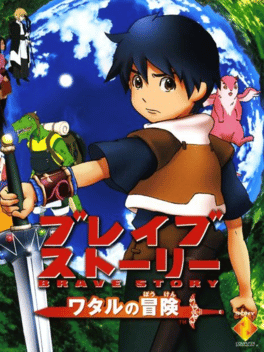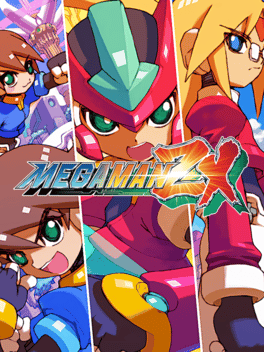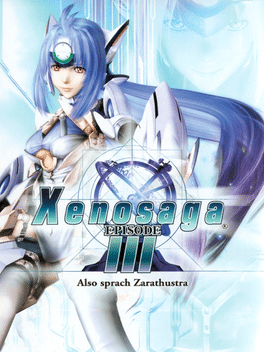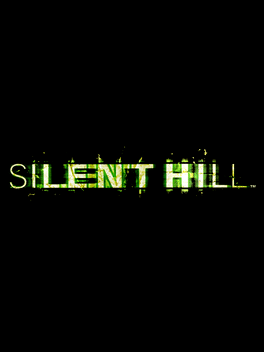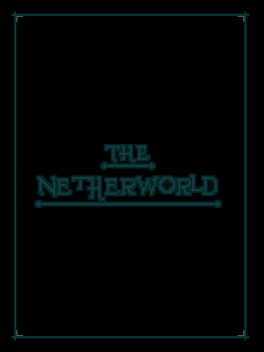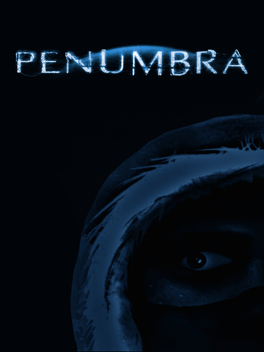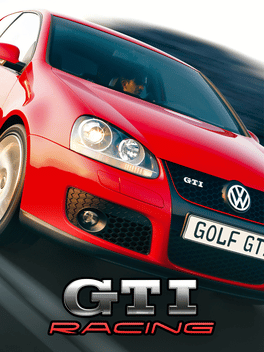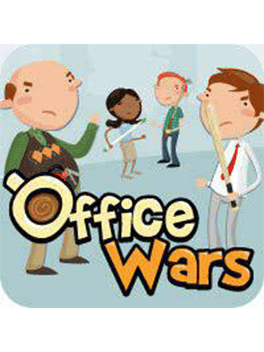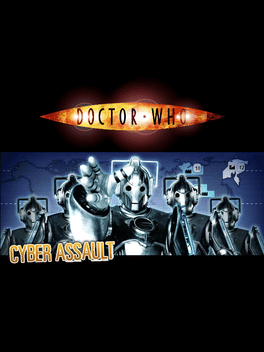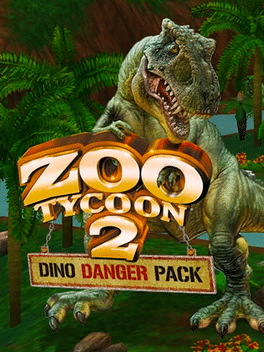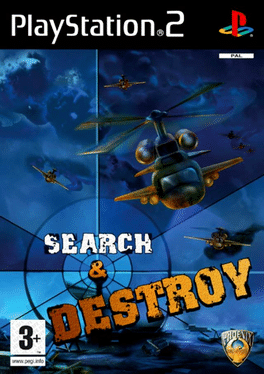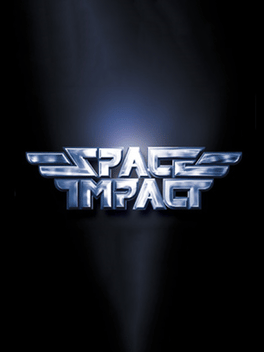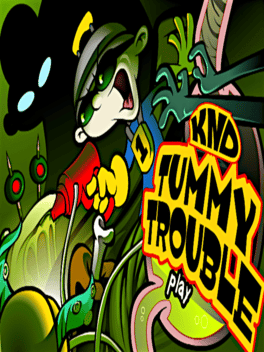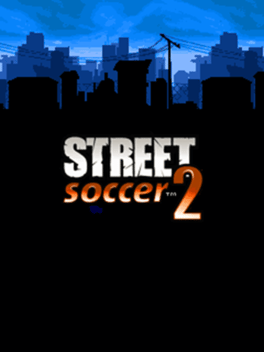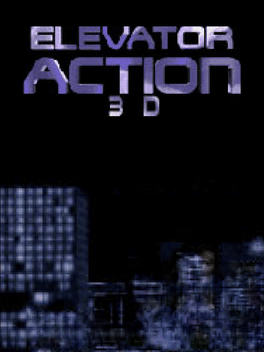New Games - Page 10254
-
Disciples II: Gallean's Return
2006
star 8.9Disciples II: Gallean's Return is a compilation edition that includes the base game, Disciples II: Dark Prophecy, plus the two standalone expansions Disciples II: Guardians of the Light and Disciples II: Servants of the Dark. -
Mega Man ZX
2006
Mega Man ZX
2006
star 7.8This game contains elements from the Mega Man X series and the Mega Man Zero series. The game introduces a new open-ended gameplay environment and the ability to select the protagonist's gender, a first in the series. The player's character, Vent or Aile, is on a 2-dimensional overlay map with sprites where he or she engages enemies to finish the mission. When Vent and Aile receive a Biometal, they are able to change form, gaining various abilities, such as the charge moves, or charging their weapon with an element of that Biometal; for example, Biometal H will charge the weapon with electricity. While in a special form, using the form-specific abilities use up weapon energy. When Vent and Aile receive the other half of the Biometal, they are able to perform a different special ability. -
Xenosaga Episode III: Also sprach Zarathustra
2006
star 8.6The story of Xenosaga III starts a year after "Xenosaga II" ended. Shion has resigned from Vector Industries after learning that the company is deeply connected to the appearance of the Gnosis. She instead joins Scientia, an underground organization working to unveil Vector's secrets in order to bring them down. Uncover the truth and save mankind in the finale of the Xenosaga series which boasts over 3 hours of movies, an updated battle system, and an improved customization feature with more in-depth character specialization and diversification and higher rewards for strategic party management. This RPG also includes an easily accessible database feature, the "Xeno Bible" and a mini-game with over 50 levels that challenges both you and your friends. -
Silent Hill: Mobile DX
2006
Silent Hill: Mobile DX is the first Silent Hill series installment's conversion for FOMA90X series 3G mobile phones. It was available exclusively in Japan as an application over the i-mode mobile service in conjunction with the Japanese release of the first Silent Hill film. The game is based in the same universe as the first Silent Hill video game, revised into a visual novel-style adventure game, consisting mainly of still images and text. The gameplay is point and click, allowing the player to navigate the world and interact with the environment. An item system, map system, and battle system are all implemented. -
The Netherworld
2006
The Netherworld
2006
You are Godfrey, a confused spirit who has just arrived at the banks of the River Styx. There is an underworld after all, but something doesn't feel right (other than being dead). -
Penumbra
2006
Penumbra
2006
Penumbra is a tech demo made by Frictional Games to show off the power of the HPL engine, released on July 4, 2006 for free. -
GTI Racing
2006
GTI Racing
2006
star 6GTI Racing uniquely blends a realistic and highly detailed car physics simulation with the pure fun of driving in a very dynamic way. Grab the wheel, push the pedal to the metal and gather the sensation for the incredible sense of speed and the power of all the real world cars. Realistic driving model: Lifelike car physics reflect the pure enjoyment of dynamic car driving using some of the best dynamic physics around. Detailed handling model with carefully adjusted parameters give you full control of the car and an incredible ease of driving whilst still being very fun to drive. Cars: GTI Racing gives you the biggest collection of the legendary European Volkswagen Golf series cars. Choose one of the 15 GOLF models, representing all five generations from its original heritage through to the current day. Try out the GTI, G60 and the outstanding R32! Check out Volkswagens hottest concept cars and classics - along with the original Beetle and T1 "Samba" transporter. Tuning: GTI Racing introduces you to the professio -
Brave Story: New Traveler
2006
star 7.3On a day that starts out like any other, an 11-year-old boy's life is changed forever when his friend Miki suddenly collapses from an unknown illness. Without the means to save her, he grows increasingly distraught when suddenly, a strange voice offers him a second chance: "Beyond the door you can change your destiny!" He soon leaves the real world and journeys to the world of Vision, where, as a novice "Traveler," he will surmount myriad ordeals in hopes of ultimately meeting with the Goddess of Fortune to have a single wish granted. -
Bejeweled 2 Deluxe
2006
Bejeweled 2 Deluxe
2006
star 6.9Bejeweled 2 Deluxe is the enhanced, standalone version of the free online puzzle game of similar name. It builds on the original award-winning game, with the same basic objective of matching "jewels" in a grid by threes, by swapping adjacent jewels of different colors. Sharper graphics and more special effects improve the experience. -
Office Wars
2006
Office Wars
2006
Office Wars was a casual, strategy-laced Facebook/social game launched around July 2010 by Broken Bulb Studios . In this tongue-in-cheek office simulator, players manage a team of quirky employees outfitted with absurd weapons (think giant shrimp, staplers, etc.) to "battle" rival office workers across cubicle corridorsO -
Doctor Who: Cyber Assault
2006
In Pete's World, after the destruction of the Cyber-Controller, a new Cyber-Leader appears and wages war against the Preachers, who are attempting to destroy the Cybus factories across the world, sending in soldiers to disable the emotional inhibitors. -
Hang-On
2006
Hang-On
2006
The LCD version of Hang-On is an handheld game developed by Handheld Ltd.. It was distributed by Epoch in 2006 as part of the EL-SPIRITS Retro series. It is based on the arcade game, Hang-On. Another "port" exists as Electronic Hang-On. -
Zoo Tycoon 2: Dino Danger Pack
2006
Dino Danger Pack was an official premium download pack for the game Zoo Tycoon 2 released on July 2006. It could be found at the Zoo Tycoon official website. -
Search & Destroy
2006
Search & Destroy
2006
Search & Destroy is an Action game, developed and published by Phoenix Games, which was released in Europe in 2006. -
Space Impact
2006
Space Impact
2006
Customize your fighter with weapons and components, and then fight across ten sprawling, action-packed levels in this arcade shooter. Battle more than thirty different enemies, including explosive ballistic cannons and deadly energy leeches. Dodge enemy projectiles to increase your power meter, or unleash devastating combo attacks. Once you've finished the single player campaign, battle your friends head-to-head with a wireless connection, or connect online through the N-Gage Arena and fight it out in World Battle Mode for the ultimate glory. -
Codename Kids Next Door: Tummy Trouble
2006
Cafeteria Reconnaissance has revealed the entrance to Gramma Stuffum`s Sinister Kitchen complex. This facility must be neutralized. Her campaign to fatten up the world`s children has incapacitated our entire task force. You are the only one left, Numbuh 1. Do not fail. -
Street Soccer 2
2006
Street Soccer 2
2006
Doltish soccer players come back. New version of Street Soccer offers more matches, more goals, more pain! It doesn't matter if you play in a clean or dirty way, you must become the street king. Win making more goals or destroying your opponents. Do you like to get red cards? No problems, you can take advantage of your experience. This is a street soccer simulator. Hooligan teams are playing. The soccer match is combined with battles and bloody fights. You are going to experience battles against 9 different teams on 3 different fields. The game offers such extra options as Medical kit, Speed Boost, Amazing Fireball. -
Elevator Action 3D
2006
Elevator Action 3D
2006
Originally developed for the arcades in 1983, Elevator Action, has been ported to several consoles such as the Commodore 64, the Game Boy, the Game Boy Color, the NES, the Saturn, and the ZX Spectrum, where it has since enjoyed a large and loyal following. Fans of the original and fans of the FPS genre will be pleased to find that classic Elevator Action has now been realized in 3D with crisp graphics, special tactical elements and fast-paced, FPS action.


